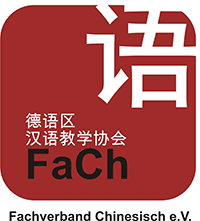化零為整-針對德語區 第一堂初級華語課之教學思考與策略
Identifier (Artikel)
Abstract
This thesis presents how the authors organize the methodologies of their first Mandarin Chinese lesson for beginners over the age of puberty in German speaking countries. The objective of this lesson is to lay a foundation of knowledge on the target language by giving a big picture of important features and elements of Mandarin Chinese with their teaching philosophies integrated with Whole Language Approach, Accelerated Learning and Suggestopedia, and Schema Theory of Cognitive Psychology. Since "Whole to part" is a principle of "Whole Language Approach," the authors start their lessons with important information about the target language — Mandarin Chinese. Their students’ mother tongue is used to help them to get the understanding of the target language. The authors believe that this can reduce the difficulties in the process of learning Mandarin Chinese. The whole lesson is divided into three sections: mind mapping the characteristics of Mandarin Chinese, teaching Hanyu pinyin, and introducing the formation of Chinese characters. The information given in the mind map includes Word Order, Inflection, Articles, Pro-Drop, Tones, and Characters, will be a great help to their students in the future. The example sentences and the activity after mind mapping can help their students understand the differences between Mandarin and German. When the students learn from the mind map that there is no conjugation in Mandarin, their former negative impression of learning Chinese will change because the grammar of Mandarin is relatively simpler than German. The second section is to teach Hanyu pinyin on the basis of students’ existing knowledge. The teaching plan is based on the principle of "meaning" of Whole Language Approach and Communicative Approach. The authors firstly use numbers from 1 to 10, then eighteen action verbs with Total Physical Response, and lastly flash cards of pictures of real objects to teach the pronunciation system of Mandarin in pinyin. The last section is to introduce the 4 ways of creating Chinese characters: pictographs, self-explanatory, associative compounds, and pictophonetic. The goal of this section is to help students understand that the strokes of Chinese characters are meaningful lines and this basic knowledge can help them remember Chinese characters in an easier way.
Statistiken

Lizenz

Dieses Werk steht unter der Lizenz Creative Commons Namensnennung - Weitergabe unter gleichen Bedingungen 4.0 International.



